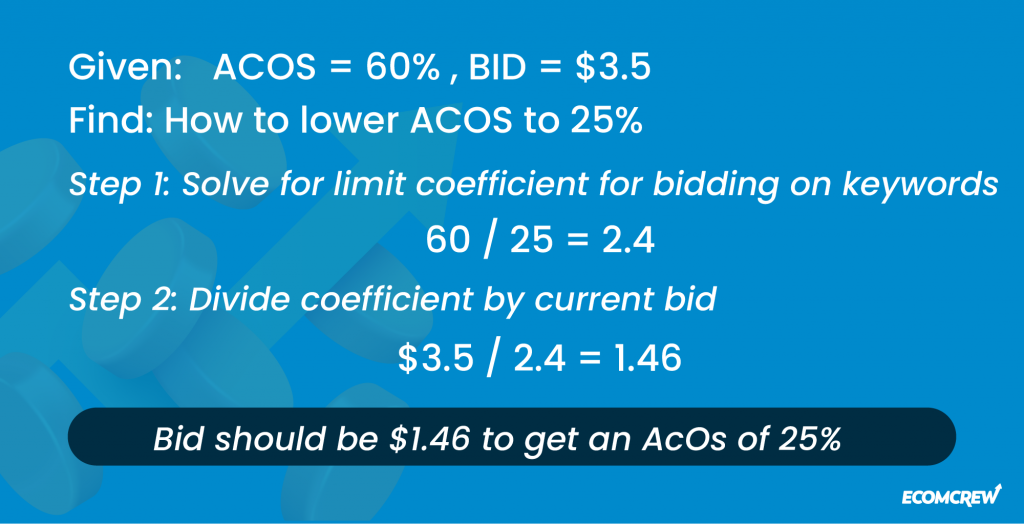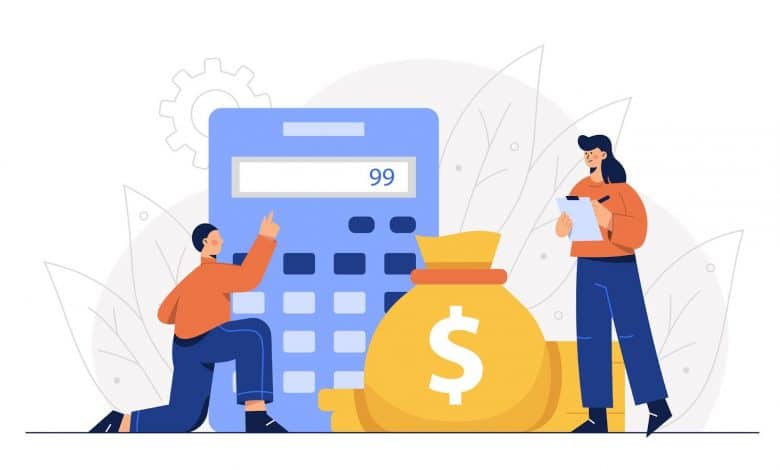What Is Amazon ACoS and How Do You Calculate It?
Advertising is an essential component for any business to increase sales, but it is also one of the highest recurring costs of your business.
In ecommerce, when you measure the success of your business on Amazon, there are a lot of metrics to be wary of. And it doesn’t help that Amazon themselves frequently roll out complex metrics to help you further measure the success (or failure) of your ad campaigns. However, if there is one metric that you should always be mindful of, it’s your ACoS.
In this comprehensive guide, we’ll discuss what Amazon ACoS is, a few ACoS sample calculations, and how you can lower your ACoS to maximize your budget.
What Is ACoS?
In a nutshell, Advertising Cost of Sales (ACoS), is a metric that determines how cost-efficient your advertising campaigns are on Amazon as a percentage. In addition, you can also think of it as the money you spend on advertising per dollar of the revenue you make.
Understanding your business’ ACoS is important for the long-term goals of your business. It can help you plan your advertising strategy moving forward.
For some Amazon sellers, ACoS may be a gray area. To be safe, you’ll want to keep your ACoS around the 15% to 20% range. This indicates that conversions are high for a certain keyword or product.
How Do You Calculate Your Amazon ACoS?
Amazon ACoS can be calculated by dividing the total ad spend by the total amount of sales generated from those ads. You’ll then need to multiply the quotient by 100 to have a result in percentage.

To help make it more relatable, here’s an example:
Let’s say you spent $2,000 on an Amazon PPC campaign which eventually generated sales of $4,000. To calculate the ACoS, we’ll divide $2,000 by $4,000 and multiply the quotient by 100, giving us a result of 50%.

Therefore, your ACoS is 50% which means that for every $0.5 your company spends on advertising, you earn $1.
This time around, let’s jumble the figures a bit. Let’s say you have an ACoS of 20% and you spent $600 on ads. To find the total sales, simply divide $600 with the ACoS in decimal form (.20). The total sales would amount to $3,000.

Recommended Listening: E526: Amazon PPC – Everything You Need To Do for 2024
Factors to Keep In Mind When Calculating ACoS
There isn’t a definite number for a good ACoS on Amazon. In fact, Amazon claims that there isn’t an optimal percentage for your business’ ACoS, but rather more dependent on your niche, size of the company, and campaign frequency, among other variables.
However, it is important to keep in mind these factors when calculating your ACoS:
1. Profit margin
Your ACoS can give you a good idea of whether your business is profitable. Your expected profit margins should be greater than your computed ACoS.
To compute your profit margins, take the total price of your sold item then subtract it by the total cost at which you sold the item.
This includes money spent on ads, manufacturing, materials, shipping, etc. Taking the difference between the two and dividing it by the value of sale will then give you the profit margin of your product.

Here’s an example:
You have a product that sells at $80. The total cost to make the product amounts to $25. In this case, your profit margin is calculated as:

2. Break-even ACoS
Break-even ACoS refers to the value at which your advertising campaigns generate enough revenue to cover the costs of your ad spend which will neither result in a profit nor loss. This component is directly related to your profit margin, advertising costs, and the revenue generated from ad-driven sales.
To find your break-even ACoS, first, you’ll need to find your profit margin and ACoS, which you learned earlier from reading this article. Once those two values have been obtained, if your ACos is higher than your profit margin, it means you’re losing money from advertising.
On the other hand, an ACoS lower than your profit margin means you’re making money from advertising. If your ACoS and your profit margin have the same value, your business has reached its break-even ACoS.

How Do You Lower Your ACoS?

To get the most out of your ACoS, here’s what you need to do.
If your ACoS is higher than your expected goal, start by analyzing your ad campaigns. This will help you identify where your funds should go to maximize your budget. Here are a few strategies you can use to lower your ACoS:
1. Prioritize your best sellers
One way to optimize your ACoS is to advertise your best-selling products. The extra sales gathered from advertising a product you know resonates well with your customers will make up for the drop in sales in your other products.
2. Analyze the effectiveness of your keywords
Focus on relevant and high-converting keywords to target in your ads. This will help ensure your ads are shown to the right audience, improving conversion rates.
Also, performing keyword research and integrating these keywords into your listing will help you attract the right buyers for your product without having to spend more on ads.
3. Optimize keyword bids

To do this, all you have to do is divide your actual ACoS by your desired ACoS for a particular keyword.
So, let’s say your actual ACoS is 60% and you wish to bring that down to 25%. The first thing you need to do is calculate the coefficient you can use to find a good limit for bidding on keywords. The coefficient is found,by dividing that number by your actual ACoS (in this example 60%), by your desired ACoS (25%), giving you a coefficient of 2.4.
The coefficient will then be divided by your current bid for a keyword to solve your expected budget.
So if your bid was, say $3.5, then you’ll divide that number by 2.4, which would then give you an expected bid of $1.46.
Therefore, you should set your bid to $1.46 or lower to achieve revenue and your desired ACoS.

4. Adjust bids on high-performance keywords

Once you’ve identified your high performing keywords from your low performing ones, it’s time to allocate more of your budget to the high performing ACoS. Generally, you should raise bids for keywords with good conversion rates and lower bids for less effective keywords.
5. Add negative keywords
Regularly review and identify poor-performing keywords and add them as negative keywords to your campaigns. By doing this, you prevent your ads from appearing on irrelevant searches and filter out customers who have no interest in your product.
Negative keywords are a great tool to make sure you aren’t wasting clicks on potential customers who may be looking for an entirely different product.
What Is ROAS and How Does It Differ From ACoS?
A business’ return on ad spend (ROAS) is the inverse of ACoS, but both measure the ratio of your ad spend and revenue. It is calculated by dividing the total ad revenue by the total ad spend of a campaign.
For example, you spent $1,500 on ads and saw revenue of $3000. You calculate ROAS by dividing $3000 and $1500 giving you a value of 2, or a ratio of 2:1.

The general rule of thumb for a good ROAS is to have a ratio of 4:1
In addition, it is a metric that measures the effectiveness of your advertising campaigns and can be applied to different timeframes, be it an individual campaign run across a short period or an annual assessment of an advertising campaign.
In contrast to ACoS, ROAS assesses a single campaign and how it has impacted revenue. Calculating your ROAS can help you determine how effective a campaign is and whether it is worth continuing.
Other Important Amazon Metrics to Consider
1. SKU level profitability
SKU-level profitability is the difference between your selling price and the total amount you pay for the process of sourcing, shipping, and fulfilling orders.
Keeping track of these expenditures can be difficult, but don’t worry. Certain tools in the market such as SageSeller, FeedVisor, and Extensiv allow you to estimate your profitability to help you decide how to price your product.
2. FBA costs
If you’ve been selling on Amazon for a while, you’ve heard of FBA costs. This is what Amazon charges you for storing your products and shipping them to customers whenever you make a sale.
These fees are mainly dependent on your product’s dimensions and weight. Amazon has even introduced different programs to ensure they can accommodate faster delivery speeds that their customers can’t get enough of.
3. Negative customer experience rate

Negative Customer Experience (NCX) is related to product returns, damages, and other customer complaints towards your business.
This metric is important to keep track of because a high NCX and return rate can increase the likelihood of your products getting delisted by Amazon’s algorithm or worse, your seller account on Amazon getting suspended.
4. Order Defect Rate
Order Defect Rate (ODR) is a metric used to measure a seller’s performance in terms of order fulfillment, customer service, and overall customer satisfaction. It is calculated by dividing the number of orders with defects by the total number of orders over a specific period.
Your ODR can be seen on your Account Health page and is based on negative feedback, A-to-Z guarantee claims, and chargeback from customers. As per Amazon standards, your ODR should be kept under 1%.
These are just some of the metrics every seller should consider monitoring and optimizing along with their ACoS in order to provide a comprehensive view of their ad performance.
Of course, these aren’t the only metrics that are critical to success in ecommerce. But if you want to avoid getting overwhelmed, the metrics mentioned above are a good place to start.
Final Thoughts
Overall, Amazon ACoS is a vital metric for sellers and advertisers to measure the effectiveness and profitability of their advertising campaigns on Amazon. It provides valuable insight into how efficiently your advertising spend is translating into revenue.
While most businesses try to aim for a low ACoS, you must identify different factors that influence your ACoS before you jump to conclusions. If your goal is to maximize sales or increase brand awareness, a high ACoS is inevitable.
Furthermore, your ACoS shouldn’t be the sole metric to measure the success or failure of your business on Amazon. It’s one of many important KPIs sellers need to monitor so that they can adjust their strategies accordingly.
Are you keen on monitoring your business’ ACoS? What strategies did you use to achieve your desired ACoS? Let us know in the comments below.




